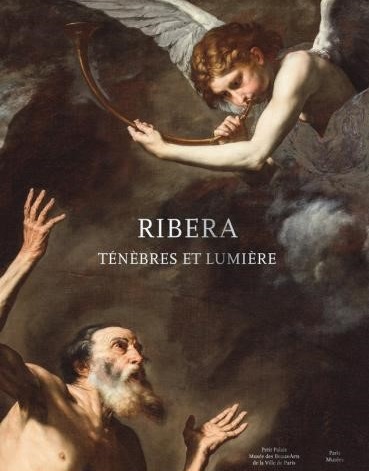Author
Annick Lemoine and Maïté Metz (eds.)
Characteristics
304 pages; 180 color illustrations; hardback; 23.5 × 30.5 cm
Publication
French; published by Paris Musées with support from the CEEH; 2024
ISBN
978-2-7596-0594-1
Price
€48,08
Buy on our site and save 5% on this book until April 30
(coupon code: DÍA DEL LIBRO)
The Petit Palais is presenting the first French retrospective ever devoted to Jusepe de Ribera (1591-1652), the terrible heir to Caravaggio, whom his contemporaries considered ‘darker and more ferocious’ than the great Italian master. Of Spanish origin, he spent his entire career in Italy, first in Rome and then in Naples.
For Ribera, every painting – be it of a beggar, a philosopher or a Pietà – stems from reality, which he transposes into his own language. The gestures are theatrical, the colours black or flamboyant, the realism crude and the chiaroscuro dramatic. With the same acuity, he translates the dignity of everyday life as well as shocking scenes of torture. This extreme tenebrism earned him an immense reputation in the 19th century, from Baudelaire to Manet.
With over a hundred paintings, drawings and prints from all over the world, the exhibition retraces Ribera’s entire career for the first time: the intense Roman years, which have only recently been rediscovered, and the ambitious Neapolitan period, which led to his meteoric rise to fame. One thing is clear: Ribera stands out as one of the earliest and boldest interpreters of the Caravaggesque revolution, and beyond that as one of the leading artists of the Baroque age. Contributions from a dozen specialists headed by Annick Lemoine and Maïté Metz, curators of the exhibition, make this catalogue a reference work on the current state of research on Ribera’s oeuvre and artistic career.
Annick Lemoine, who holds a PhD in art history from the Sorbonne, is director of the Petit Palais in Paris. She previously directed the Musée Cognacq-Jay and the Department of Art History at the French Academy in Rome. She has published numerous articles on Italian painting of the seventeenth and eighteenth centuries and on the fortunes of Caravaggio and the painting of the Caravaggists, besides authoring Nicolas Régnier (ca. 1588- 1667), alias Niccolò Renieri. Peintre, collectionneur et marchand d’art (2007). Among other exhibitions, she has curated Les Bas-fonds du Baroque. La Rome du vice et de la misère /I bassifondi del Barocco. La Roma del vizio e della miseria (with F. Cappelletti, Paris and Rome, 2014) and Valentin de Boulogne. Réinventer Caravage /Valentin de Boulogne. Beyond Caravaggio (with K. Christiansen, Paris and New York, 2017).
Maïté Metz, who holds a degree in Philosophy from the Sorbonne and a diploma from the École du Louvre, is curator of Ancient Painting at the Petit Palais in Paris. Previously she was the curator in charge of Paintings and Stained Glass at the Musée Carnavalet and studied Goya’s ‘black paintings’ at the École des Hautes Études en Sciences Sociales. She has contributed to various publications on Spanish and Italian collections, such as Le Greco/Modigliani (2015), L’Âge d’or de la peinture à Naples (2015) and Heures italiennes. Trésors méconnus de la peinture italienne en Picardie (XIV-XVIII siècles) (2017), and with Annick Lemoine she has co-curated the exhibition Ribera. Ténèbres et lumière (París, 2024).
Other exhibition catalogues on Ribera sponsored by the CEEH:

